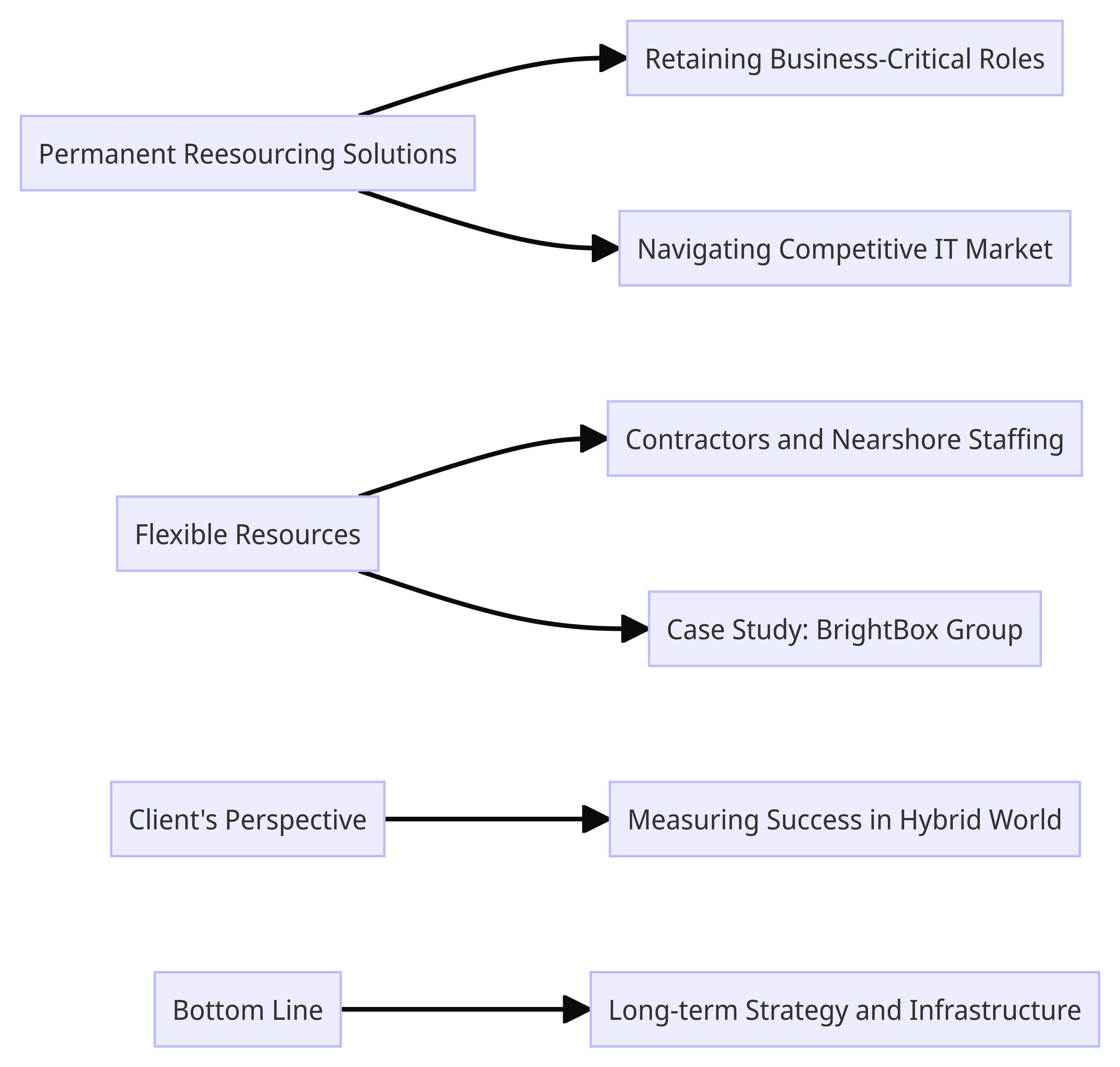Embracing Flexible Resource Models
It’s undeniable; the world has shifted on its axis. Two years ago, as the work week drew to a close, employees would migrate from the office to the pub below for a shared pint and convivial conversation. Today, those social interactions have migrated to digital platforms. The pandemic has ushered in a brave new world of work, defined by hybridity, flexibility, and constant adaptation.
Permanent Resource Solutions in the New Era
IT departments have rapidly understood two essential truths: digital transformation won't slow down, and a tech team's effectiveness hinges on their adaptability, resilience, and skill retention in crises.
Businesses have scrutinised their hiring structures to understand if they're still relevant, wrestling with the perpetual "build or buy" quandary central to IT support. Traditional hiring structures have been revaluated, and a new emphasis on long-term resource retention has emerged.
Professionals now seek more security, career growth, development opportunities, and hybrid work options. This shift in workplace expectations is driving a mass employment exodus – the 'Great Resignation', and it is crucial to recognise these evolving expectations to adapt to good resourcing practices.
Permanent Staffing in IT: Navigating the Competitive Market
The IT market, integral to modern life, continually grapples with resource scarcity. Distinguishing between business-critical and business-important roles within your organisation and investing in the former becomes vital. For these critical roles, a permanent employee who understands your organisational DNA and can build a competitive user experience, drive IT efficiencies, and enhance your brand journey, could be the answer.
The Power of Flexible Resources
The secret to balancing the critical and important business needs lies in flexible resource models. Contractor resources act as a protective layer that can expand in times of growth and shrink in more challenging times.
The Rise of Contractors and Nearshore Resource
Over the past two years, shortened notice periods have diminished client risk exposure. Businesses can react faster to fluctuations thanks to reduced notice periods.
The nearshore and offshore option offers a solution for roles, projects, and functions that can be fulfilled at a lower cost without compromising quality. Teams communicate and collaborate effectively through collaboration tools like Slack, Teams, and Zoom, mitigating concerns about "out of sight, out of mind" delivery.
Case Study: BrightBox Group's Nearshore Partners
Take BrightBox Group, for instance, which has three nearshore partners based in Eastern Europe. Their teams are sourced from world-class technology universities and are committed to delivering excellent results. They work in UK time zones and have broken down many perceived barriers in the past two years, proving that optimised cost doesn't have to mean lower quality.
The Client's Perspective
Two critical elements for clients to measure output and drive success exist: communication and metrics. Agile methodology lends itself to this form of project delivery.
Measuring Success in a Hybrid World
For businesses new to flexible workforce models, finding the right metrics and communication channels will be crucial. Agile methodologies, systems such as Jira or Azure DevOps, and regular sprints can support this transition, helping keep teams up to date and provide valuable reporting feedback.
The Bottom Line
In a world reshaped by a global pandemic, flexible workforce solutions have been a lifeline for organisations. Smaller businesses are beginning to catch up, while larger companies continue to evolve from legacy operations.
The challenge lies in ensuring a long-term strategy and the right IT infrastructure to handle the changes ushered in by the pandemic. As businesses navigate this new terrain, their resource strategy will need to evolve continuously, keeping in step with the shifting sands of time. The flexible resource model presents a new way forward, one that champions resilience, adaptability, and, above all, preparedness for a future that promises to be as unpredictable as it is exciting.
A diagram to illustrate key components of contemporary workforce models.


